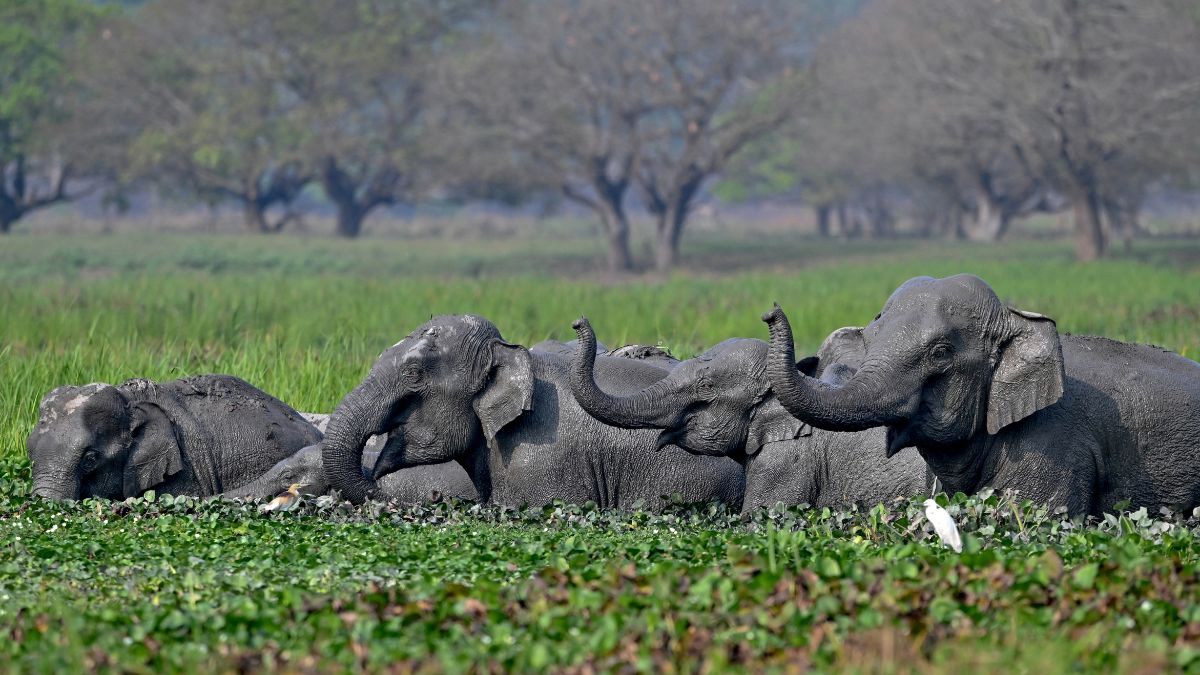World Elephant Day on August 12th draws attention to the need to protect elephants around the world. These huge animals are considered the “architects” of the wild.
Elephants play a major role in seed dispersal in tropical forests, pollination and improving soil fertility. They are necessary for the existence of forests that meet the basic needs of people, noted Down to earth.
In India, these animals have great significance and are even considered a sacred symbol in Hinduism and Buddhism. However, these animals are exposed to an imminent danger: trains.
Let’s take a closer look.
Elephants in India
According to the latest census in 2017, there are about 29,964 elephants living in India. According to government data, the country is home to over 60 percent of the world’s population of wild Asian elephants.
Asian elephants are considered endangered. According to a 2019 estimate by the International Union for Conservation of Nature (IUCN), there are about 40,000 to 50,000 of these elephants left in the wild worldwide.
In India, the loss of elephants due to train accidents is a cause for concern. According to official figures, up to 200 elephants have died in train accidents in the last 10 years.
Last December, a pregnant elephant and her calf were hit by a train as they crossed a railway track near Jim Corbett National Park in Uttarakhand’s Haldwani. While the mother died, the baby, named Bani, was left paralyzed in both hind legs.
Experts from the non-governmental organization Wildlife SOS, who are caring for Bani, say her condition is gradually improving.
“Bani may have to live her life with a disability, but with each passing day you can see how she is becoming less anxious and more playful. She loves her bananas and is a real drama queen (throws tantrums) when she doesn’t get them,” said Kartick Satyanarayan of Wildlife SOS The Guardian in April.
What are the authorities doing?
The state and central governments are taking measures to curb the number of elephants hit by trains.
Tamil Nadu has introduced an AI-based monitoring system to prevent elephant deaths on railway tracks. This comes as such tragedies are on the rise in the southern state. According to officials, 36 such casualties have been reported in the last decade.
Sensors near railway tracks alert the railway administration and the forest department about elephant movements, which helps prevent accidents, reported BBC.
According to Supriya Sahu, secretary of the Tamil Nadu Forest Department, 400 cases of elephant movement near railway tracks have been recorded since the project began in February.
“Technological interventions significantly reduce the number of train accidents involving wild animals,” said Sahu BBC.
In November 2023, Railway Minister Ashwini Vaishnaw announced that an AI-based monitoring system called Gajraj would be deployed on a 700-kilometer stretch across various states over the next seven to eight months to prevent elephant deaths.
“The system is 99.5 percent accurate and is based on pressure waves. It helps detect elephant movements near tracks, which helps the train driver control his speed at least 200 meters before the animal crosses the tracks,” he said at the time.
The Uttarakhand Forest Department is using drones to monitor the movements of elephants.
States are also building “wildlife overpasses” to provide safe passage for wildlife. The Guardian As mentioned earlier, there is a flyover covered with bamboo and banana trees in West Bengal to encourage the use of MPVs and enable them to cross the railway tracks safely.
In June, Karnataka received its first elephant transfer to ensure the safe crossing of the huge animals from Bannerghatta National Park to Savandurga Forest.
READ ALSO: World Elephant Day: 9 wildlife sanctuaries for observing giant lizards
What can be done?
Implementing safety measures to prevent elephant deaths in train accidents is challenging.
The Indian Railways network stretches over 130,000 km across the country. Many of the railway lines run through forested areas and cross vital elephant corridors.
A set of guidelines entitled Handbook for mitigating the impacts of roads and railways on Asian elephants A report prepared by IUCN technical groups recommends that when planning new roads, railways and other linear structures, the ecological and social impacts on habitat, wildlife, pollinators and the social well-being of local communities should be assessed, particularly when wildlife is affected.
Vivek Menon, Executive Director of Wildlife Trust of India and Council Member of IUCN, said Mongabay-India in May that development takes priority over the conservation of global biodiversity. “In this case, both goals can be achieved by applying policies that allow the right of passage for this wonderful animal, the elephant, while allowing important road or rail projects where they are needed and ecologically appropriate,” he said.
An expert suggests restricting train traffic at night to prevent elephant deaths. A study of the frequent train accidents involving bull elephants found that most accidents occurred between 6 p.m. and 6 a.m.
“One way to avoid this situation is to reduce train traffic to an absolute minimum at night. Railway authorities should ensure that the speed of trains passing through forests inhabited by wild animals is regulated between sunset and sunrise. When trains pass through dense forests at night, a minimum speed of 30 kilometres per hour must be maintained. Extreme caution should be exercised on vulnerable stretches,” wrote V Sundararaju, president of the Society for Conservation of Nature in Trichy, Tamil Nadu, for Down to earth in 2019.
He also called for the construction of overpasses and underpasses at the intersections of elephant corridors and railway tracks. Sundararaju said signs, surveillance cameras and wireless sensors could be installed at accident-prone spots.
“The forest is their home and trains are encroaching on their home. Urgent installation of AI-based accident prevention systems and strict implementation of speed controls will save hundreds of elephants,” said Satyanarayan of Wildlife SOS The Guardian.
To limit the migration of jumbos across the tracks, measures can be taken by securing food and water within the forests so that they do not have to migrate.

)